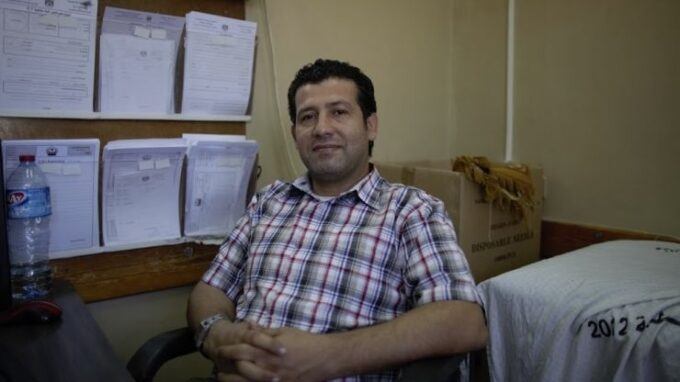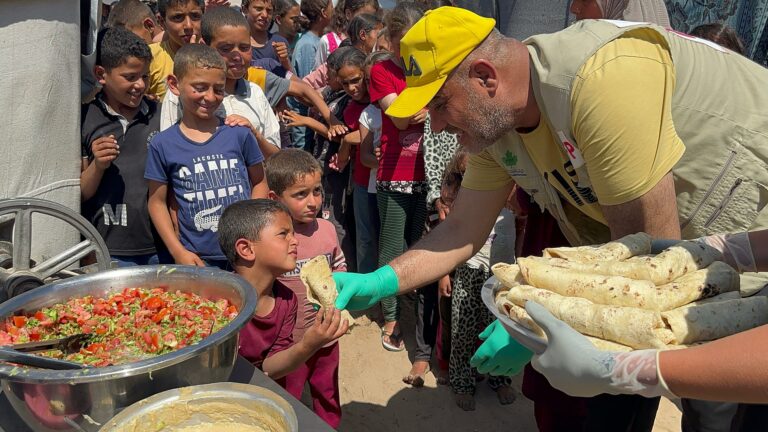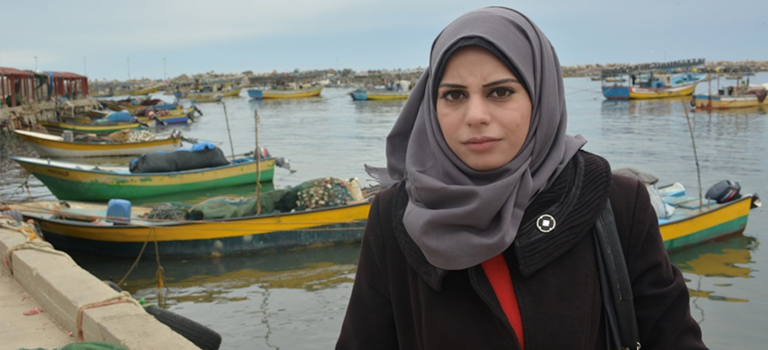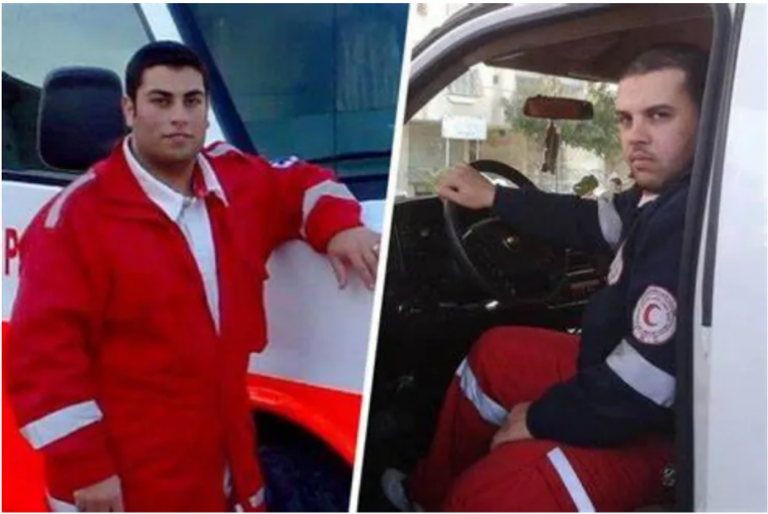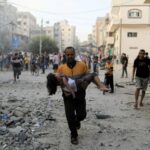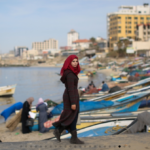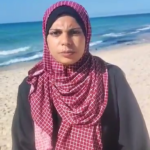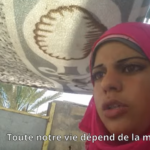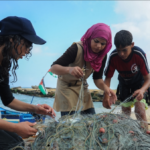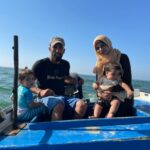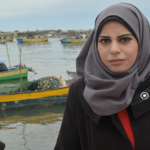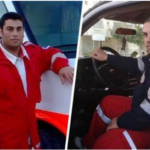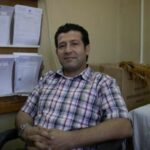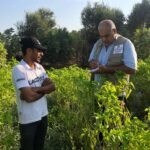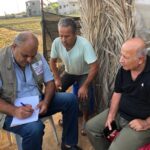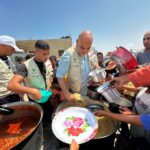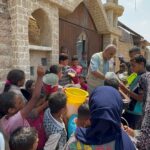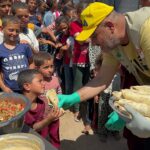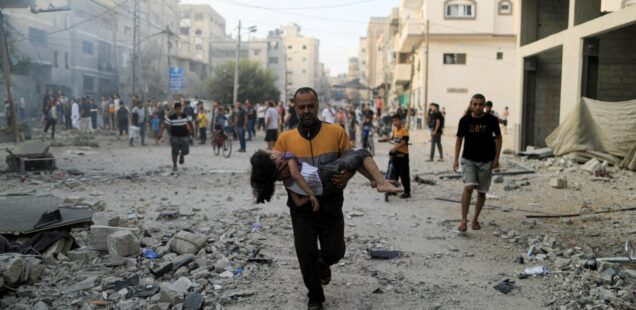
2024 Paul K. Feyerabend Award to Solidarity in Gaza – Five examples of human solidarity in Gaza that should inspire the whole world
Gaza is one of the oldest inhabited areas around the Mediterranean, with remains dating back five millennia. Since the middle of the last century, this tiny strip of land has been home to up to 2.3 million Palestinians, both original residents and refugees, in increasingly difficult conditions. Since 2006, their collective intention to resist has led to increased scarcity, strict confinement, the highest population density in the world and repeated massacres. This was only a prelude to what is happening today, when – according to the investigation by the International Court of Justice – it is highly likely that a blatant genocide is underway by the Israeli army with the financial and military support of the United States (and not only).
Since October 2023, Gaza has suffered daily indiscriminate bombardments; targeted assassinations of journalists, doctors, intellectuals and public service personnel; random killings of people, including when they wave white flags; mass humiliation and imprisonment; torture and mass physical and psychological murder; the destruction of historic monuments, most hospitals and housing, all its universities, schools, libraries, public archives, workplaces, mosques, churches, public security installations and even dozens of UN buildings housing refugees; the desecration and disposal of bodies in mass graves; the continuous surveillance, harassment and multiple forced displacements of hundreds of thousands of people…
The genocidal intent is clearly expressed by the planned and executed blockade of all incoming food, fuel and water, compounded by the destruction of internal food and energy production and distribution systems (e.g. greenhouses, bakeries, solar power units, power lines) and the destruction of water supply and sanitation facilities. At the time of writing, tens of thousands of children, women and men have been killed directly and indirectly, and tens of thousands more injured and maimed. This tragedy reveals the colonial and racist mentality, the inhumanity and barbarity that remain at the heart of our so-called “civilization”.
The genocide in Gaza is broadcast live thanks to local journalists, who often pay for their bravery with their limbs and their lives. The only silver lining in all this is that not only journalists, but also the “normal” inhabitants of Gaza demonstrate incredible fortitude and mutual solidarity, offering inspiration and a different vision of humanity’s future. For the Paul K. Feyerabend 2024 Award, the Foundation has identified five of them who represent the spirit of solidarity that is normal in Palestinian society, and in Gaza in particular, and which, in the current circumstances, is more vital than ever and needs to be made more visible than ever. These people are: Dr Adnan al-Bursh; Mrs. Madleen Kulab; Mr. Abu Amir (Mutasem Eleiwa) and paramedics Ahmed al-Madhoun and Yusuf Zeino.
Dr Adnan al-Bursh was not only one of Gaza’s leading surgeons… he was also one of its leading humanitarians, who had repeatedly sacrificed his own safety to provide vital medical treatment to people under bombardment. As head of orthopaedics at Gaza City’s Al-Shifa Hospital, he was instrumental in setting up the limb reconstruction unit, which opened after the 2014 Israeli military attacks on Gaza.
In December 2023, Dr al-Bursh risked his life to go to the Al-Awda hospital in the Jabalia refugee camp in the north of the Gaza Strip to treat patients. The hospital had already come under repeated attack from the Israeli army, including air strikes that hit ambulances and killed two Médecins Sans Frontières doctors. By December 12, the hospital was in fact under siege, surrounded by Israeli troops and tanks and subjected to almost constant sniper fire, shooting patients and nurses from the windows. The water supply was cut off, and the people inside the hospital suffered terrible hunger. It was into this massacre zone that Adnan al-Bursh rushed to help the stream of wounded civilians admitted to the understaffed hospital.
Dr Al-Bursh was born and raised in the Jabalia refugee camp and fully understood the landscape of horror he decided to enter when he returned to serve at Al Awda hospital. For two weeks, he performed operations by cell phone light and without anaesthesia, until Israeli troops entered the hospital, arrested all the medical staff, checked their identity papers, arrested ten of them, including Dr al-Bursh, stripped them naked, handcuffed them and took them to Ofer prison. Once he and his colleagues entered the darkness of Ofer, there was no news of their condition, until the abrupt and insensitive announcement of Dr al-Bursh’s death. There is still no news of his colleagues. Ofer prison, originally known as Incarceration Facility 385, is an Israeli “black site” where indiscriminate torture is undoubtedly practiced. The few released prisoners and even Israeli videos bear ample witness to the war crimes perpetrated on prisoners. According to the Israeli army’s own count, dozens of Palestinians have died in custody since October 7, 2023.
Doctor Adnan Al-Bursh was bombed from hospital to hospital, but he refused to leave his patients behind, and instead of heading for the “evacuation zones” in the south, he made his way north to the eye of the storm, where his skills and care were most needed, where the mutilated and shredded bodies of his people were being pulled from the bomb craters and rubble of ruined buildings, hour by hour. It’s hard to imagine a more heroic figure in our depraved and discouraging times, and that’s of course why his example had to be erased. Dr Adnan Al-Bursh was intelligent, humane and committed. He spoke several languages. He could see and explain the ravages of occupation and the horrors of war. He was exactly the kind of person who should be eliminated as an example and possible leader for the Palestinian people. (See: https://www.counterpunch.org/2024/05/10/medicide-in-gaza-the-killing-of-dr-adnan-al-bursh/ and https://www.counterpunch.org/2024/06/24/remember-the-palestinian-doctors-killed-by-israel/).
Abu Amir (Mutasem Eleiwa) is a Gazan, representative of the French Jewish Union for Peace (UJFP) in Gaza since 2016 in the Khuza’a region. Under the bombs since October 7, 2023, he has continued his work more than ever. The first achievements under his coordination had been significant (in Khuza’a, for example, there was the construction of a water tower, pipes, solar panels, a farmers’ house, a solidarity nursery, then the acquisition of a car with which an agronomist visited farms throughout the Gaza Strip…) but all this was destroyed by the Israeli army after October 2023 (https://ujfp.org/la-situation-a-khuzaa/). Abu Amir, his family and his team, based in Nuseirat, first helped the displaced people of Rafah. With the little solidarity money that continued to arrive despite the difficulties, they continued to provide tents, shoes and clothing, and above all a collective canteen and a system for distributing meals and bottled water to a population on the brink of starvation.
Abu Amir’s work takes place on the exodus routes, in the areas where the tents are set up and in the schools where the population has taken refuge. For example, large collective tents on the seafront in Khan Younis welcomed hundreds of peasants from the Khuza’a region, who remained grouped and united despite everything. By mid-April 2024, 736 families occupied the tent camp, where the Abu Amir team prepared and distributed food three days a week (https://ujfp.org/un-rapport-sur-le-travail-humanitaire-dans-le-camp-des-agriculteurs-deplaces-de-lest-de-khan-yunis-temoignage-dabu-amir-16-18-avril-2024/ ). Two projects to provide schooling for children and psychological support, particularly for women, have also been successfully implemented. Abu Amir and his team determine on a day-to-day basis the immediate needs, the amount of aid required and the best way to distribute it. Scrupulous accounting is kept even in the hell of the bombardments… (https://ujfp.org/auteur/abu-amir/).
Madleen Kulab has been a fisherwoman for several years. She is the first woman in Gaza to be so. In Gaza’s patriarchal society, winning the right to exercise a man’s trade requires a great deal of determination and know-how (see https://youtu.be/XlWp0o5RFj8 ).
Thanks to her determination and obstinacy, she overcame the hostility of some of her colleagues and obtained recognition from the Gaza authorities of her right to exercise her profession, but unfortunately had to bow to incessant attacks by the Israeli navy. She eventually lost her boat, captured with all her fishing gear in 2016. Between happiness (her marriage, her children) and painful moments (her younger brother was among the dead of the 2018 “peaceful return marches”), she writes in 2019: “I will keep moving forward. I will never give up. I have now set up workshops for women who want to learn to fish and make fishing nets. I’ve also set up a fishing club for women”. (https://madleenfishing.win/ ). When the deluge of bombs hit in October 2023, she had to flee with her family, including a young baby, to southern Gaza. There, she continued to try to organize herself to survive in solidarity with many destitute fishing families, using her website to appeal to people and organizations of conscience.
Ahmed al-Madhoun and Yusuf Zeino are two brave paramedics who lost their lives trying to save a little girl in conditions of unimaginable cruelty. In January 2024, Bashar Hamada’s family and two cousins, including 6-year-old Hind Rajab, were driving away from their home in Gaza City after receiving an evacuation order. When they were attacked by the Israeli army, most of them were immediately killed, but in the back seat, Hind and her sister were injured and covered in blood. Before her sister was also killed, she and Hind managed to call their family and talk to their mother, desperately asking for help. The Gaza health system then frantically tried to coordinate with the Israeli army to obtain authorization to send an ambulance to the scene to rescue Hind. At around 4.30pm, the authorization was finally obtained and, after agreeing on the route to be followed by the rescue workers (the Israelis provided the Gazans with a map showing the route), an ambulance set off in the direction of the Tel al-Hawa traffic circle.
As soon as the ambulance and the two paramedics on board -Yusuf Zeino and Ahmed al-Madhoun- arrive on the scene, the Israelis target them with laser sights… while Hind continues to ask “Come and take me…”. The ambulance then tries to get closer, slowly and cautiously… but gunfire and explosions erupt. Ahmed al-Madhoun and Yusuf Zeino are killed by tank fire, which completely explodes their ambulance. Hind Rajab is killed by a final burst of machine-gun fire.
Given the scope and scale of Israeli intelligence gathering in Gaza, there can be no doubt that the Israeli army was monitoring the phones used by Hind, the paramedics and Gazan officials. They heard young Hind’s cries for help. They heard the rescuers arriving on the scene. And they murdered them all in cold blood. So this is the story of people whose empathy was too strong to leave a child alone, and others whose hatred was too strong to stop them from pulling the trigger. (See: Meg Kelly, Hajar Harb, Louise Loveluck, Miriam Berger and Cate Brown. “Palestinian rescue workers said Israel gave them safe passage to save a 6-year-old girl in Gaza. They were all killed.” Washington Post, April 16, 2024. https://www.washingtonpost.com/world/interactive/2024/hind-rajab-israel-gaza-killing-timeline/).

